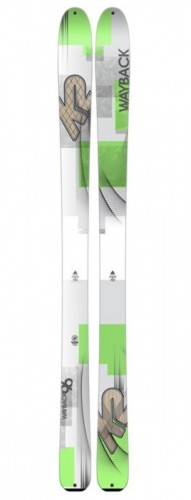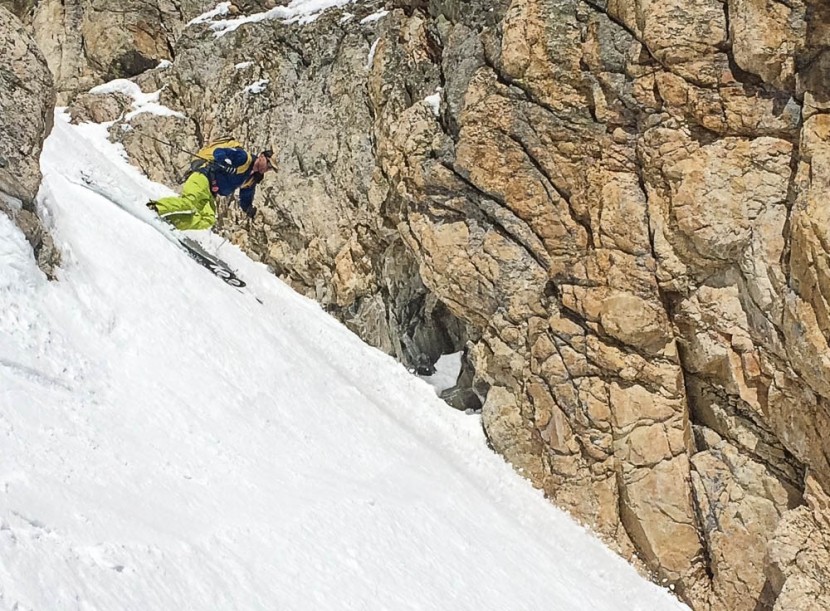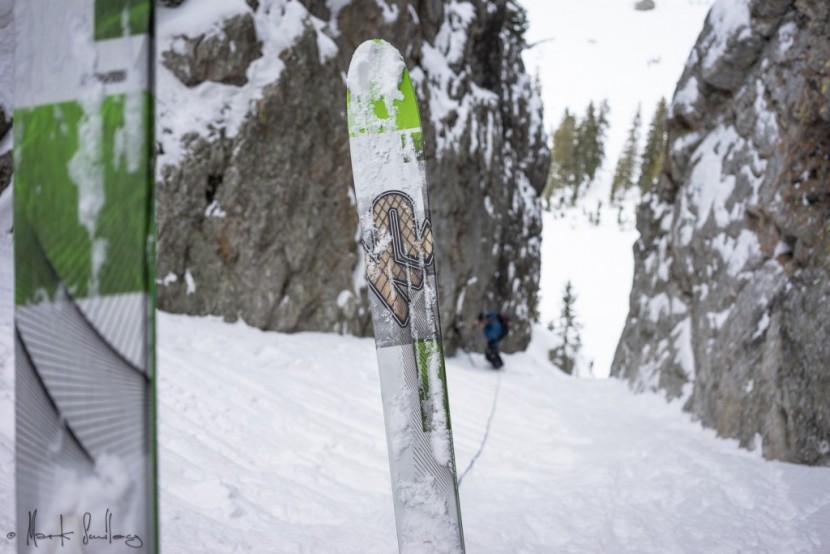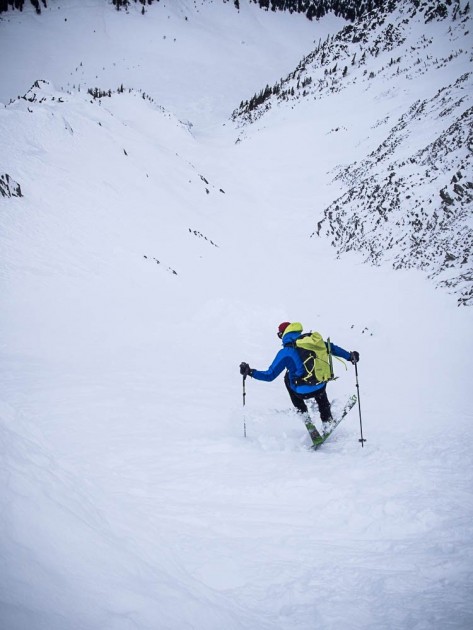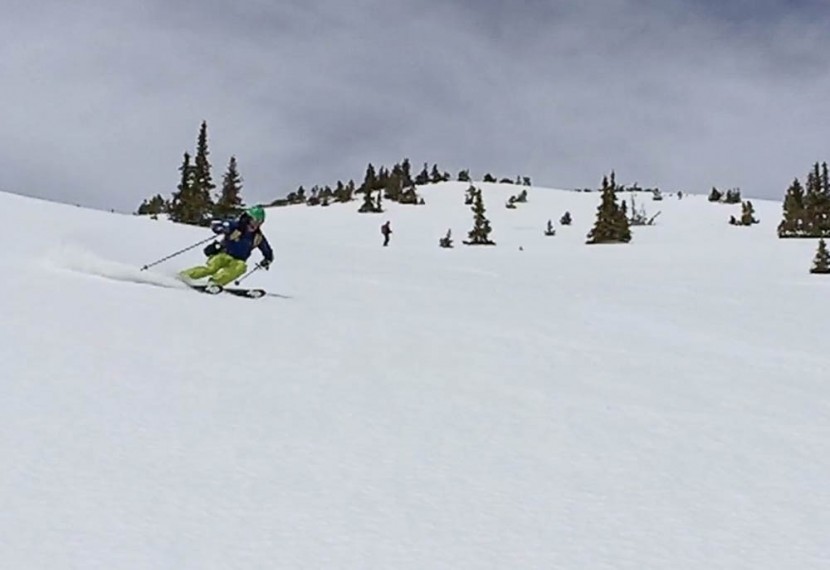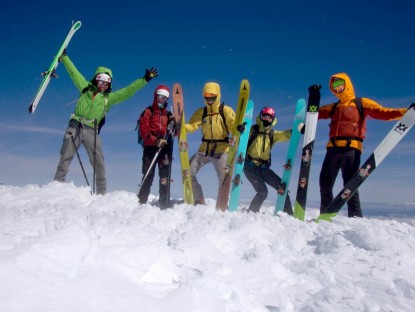K2 Wayback 96 Review
Our Verdict
Our Analysis and Test Results
Hands-On Review of the K2 Wayback 96
We enjoyed the Wayback's reliable, neutral design. With the Wayback, some notes on sizing are required before we proceed. In order to select representative products for this review, we tried to get them all about the same size. We purchased skis sized for our lead test editor. For his 5'10" and 165lb frame skiing in an athletic, moderately paced, expert (though not world class by any means) fashion, we basically got whatever skis were closest to 182cm. Rarely a company's measurements are different than the claimed sizes.
As it turns out, K2 skis are sized longer than their marked length indicates. We purchased size 184 Waybacks that measured at just over 186cm. The next size down is their 177. While most of the other skis we tested were a cm or two different from their claimed length, the Wayback is the only one we wished we had gotten in a different size. We were able to test it adequately, extrapolating performance and making sure bigger people got to test them. In the end, this is the one ski model we tested that we would recommend downsizing from what we chose. We found the same trend in the K2 Wayback 104. We purchased the “184cm” and measured it at 187cm.
Weight
The Wayback 96, as tested in its 184 length, weighs just under seven pounds. This puts it just into the heavier half of our test roster yet is still a respectable mark. Given the relatively narrow width, however, it is a little on the heavy side as compared to its contemporaries. Even if we downsized to the 177, the Wayback would still be considerably heavier than, for instance, the Best Buy Fischer Hannibal. The Wayback, at 1545g per ski, is basically the same weight as the slightly shorter Scott Super Guide 95. For this weight, the Super Guide skis better all around. The Wayback's construction is perhaps a bit outdated, as other companies tweak their offerings in this weight class. The Super Guide is simply a newer model with more sophisticated construction and materials.
Stability at Speed
Even in the form factor that skied long, we didn't find notable stability in the Wayback. We expect longer skis to be more stable at speed. Perhaps the construction of the Wayback negates some of the stability gains of the additional length. One tester, on a quick ski of the mega classic STS Couloir in Rogers Pass, BC, found them to be chattery and wobbly landing out of steep jump turns. This skier is accustomed to the performance of the Wayback's heavier sibling, the revered K2 Wayback 104 (formely named the Coomback). Comparatively, the Wayback 96 is lighter but less stable at speed and in steep, choppy conditions.
As compared to its closest weight competitor, the Wayback is less stable than the Super Guide. Generally, we find that stability is first a function of weight, then length, then construction subtleties. The Scott and Wayback weigh the same, and the tested Wayback is longer. In this case, it must be the construction attributes and materials that set the Scott ahead. That being said, the Wayback is all the ski most will need. There are other issues with skiing fast in the backcountry. Most practitioners wisely ski conservatively and well within their ability and the capacity of their equipment.
Firm Snow Performance
The moderate sidecut and relatively narrow profile of this ski made for excellent edge grip on hard snow. Our lead tester used them on a hard, late winter descent of the Sliver Couloir in Grand Teton National Park. In that setting, with firm sun-baked snow, the Waybacks edged like mad. Only the narrower skis in our review were more confidence inspiring in firm conditions. In summary, the Wayback grips well enough for even the scariest rock hard skiing. We do wish it were a little more stable scrubbing speed in the hard and steep, but the grip and overall performance are more than adequate.
Powder Performance
We love powder skiing! Our test team covered the continent in the otherwise weird winter of 2014-15 chasing soft snow. Those days and runs on which we found the blessed blower on the Wayback were basically just as fun as with any of the other skis. This isn't saying much, though. Powder snow is so fun, and modern skis are so good that we found little to distinguish the bulk of our tested products. Fat or skinny, light or heavy, all the skis we tested loved the pow. Because of this fundamental truth, many pow-seekers will pursue a super lightweight ski to maximize the amount of vertical they can bag. For this reason, we awarded a Top Pick Award for Powder Skiing to the ultralight DPS Tour1 Wailer 99.
Crud/Poor Snow Performance
It is in poor snow that a ski's design nuances really become clear. And there are many design nuances that affect a ski's performance. Length, width, sidecut, materials, construction, rocker, and camber all combine with some other manufacturing magic to determine how a ski rides. Because of the great number of variables behind a ski's performance, we hesitate throughout our ski review to attribute performance to certain criteria. Some rockered skis are great, while others aren't. Some wide skis love the pow, while others do not as much.
When it comes to skiing the backcountry's special categories of crappy snow, we let the proof lie in the pudding. While no one likes sloppy mashed potatoes or breakable crust, we all get our share in the course of normal backcountry tours. On the K2 Wayback, in those tougher conditions, we didn't find anything special. Just like with the Dynastar Mythic and La Sportiva Vapor Nano, we were able to link parallel turns on the Waybacks in moderately poor snow and with fresh legs. When the body tired and the snow got particularly bad, we resorted to survival ski technique. With the higher scoring poor snow skis like the Dynafit Chugach, the tough conditions could almost be called fun.
Best Applications
The current and past models of the Wayback are widely available, well-made, and perform well in almost all backcountry skiing circumstances. For the enthusiast's quiver-of-one backcountry ski, we recommend the Wayback without hesitation. If you ski more than on the weekends or frequently go for distance and time, you'll do better with something more purpose built. If you are building a quiver of skis, aim fatter or skinnier than the Wayback.
Value
The Wayback is a good value. Performance isn't off the charts good, but it is adequate for skiers from beginner to expert. This is an excellent first backcountry ski. It is light enough to lug around on big tours but will last a few seasons as you get your systems figured out. It is also an excellent ski for expeditions and traveling, as it is reliable, versatile, and can be downsized for packing better than some of the other skis we tested. However, for accomplished backcountry skiers, the Best Buy Hannibal is lighter, skis similarly, and will even cost you less money.
Conclusion
Every tester liked the Wayback, but no one loved it. Every other ski in our review had at least one diehard fan but numerous detractors, too. The Wayback doesn't inspire great feelings one way or another, and that is a great attribute for an inexpensive product. The Wayback should have wide appeal and many satisfied users. High-end skiers may outstrip its capabilities and wish for lighter and/or more hard-charging ski performance. Remember that if you are on the fence between sizes, go for the smaller size of Wayback.
Skins
Like most backcountry ski manufacturers, K2 will sell you skins specifically for its skis. The skins that K2 sells are actually manufactured by Pomoca, but use a special K2 system that attaches to tip and tail holes in the skis. We did not test the K2 skins in our Climbing Skin Review. La Sportiva skis also can be purchased with Pomoca manufactured skins that use the same sort of tip and tail attachment. We did test the La Sportiva LS Tour Skin and found them to perform excellently.
Pomoca makes many, many different models and licenses their products to many other companies. If the K2 skins are the same as the La Sportiva ones, or at least similar, we can recommend them highly. With a company like K2 that offers their own skins, the consumer has the choice of being brand loyal or using another company's skins. With the K2/Pomoca partnership, and the clever tip and tail attachment, we recommend that the user stay brand loyal in this case. We do not always recommend that.
Recommended Pairings
To build a reasonably priced, reliable, all-around ski touring setup, combine all of our Best Buy equipment. These skis plus the Dynafit Speed Turn bindings, Black Diamond Ascension Nylon skins, and Dynafit Neo PX boots will result in a rock solid ski setup for considerably less than many of the alternative ways of constructing your rig.


